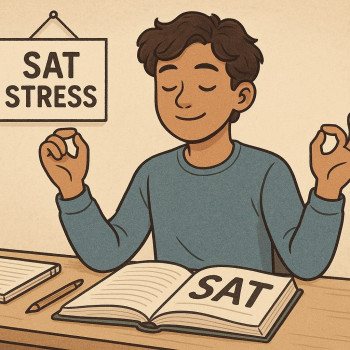Language Precision in SAT Grammar Questions
There’s a quiet kind of power in choosing the exact right word, the exact right construction, and the exact right comma. On the SAT Writing and Language section, that quiet power becomes measurable: a handful of precise choices can be the difference between a correct answer and a trap. This post walks you through why language precision matters on the SAT, the patterns that show up most often, concrete strategies you can use on test day, and a realistic study plan to make precision second nature.
Why Precision Matters — Beyond Feeling ‘Right’
The SAT isn’t asking for literary flair. It’s asking for standards of written English: clarity, economy, and correctness. When a sentence is precise, it communicates its idea with the fewest possible obstacles. The SAT tests this by giving multiple plausible options and expecting you to identify which one removes ambiguity, maintains logical flow, or follows a grammar rule.
Precision on the SAT means four things:
- Accuracy: the sentence conforms to standard English rules (subject-verb agreement, pronoun use, etc.).
- Clarity: meaning is unambiguous; the reader isn’t forced to guess who or what a pronoun refers to.
- Brevity: unnecessary words don’t clutter the sentence; concise choices often win.
- Consistency: verb tenses, tone, and parallel structures align throughout the sentence and paragraph.
Common SAT Grammar Topics Where Precision Rules
Some grammar topics recur because they tie directly to clarity. Here’s a quick tour of the ones that matter most and what “precision” looks like for each.
Subject-Verb Agreement
Keep an eye on the true subject of the sentence. Words between subject and verb, or modifiers like “along with” and “as well as,” don’t change agreement. Collective nouns, indefinite pronouns, and inverted constructions are the places where traps hide.
- Precision tip: Identify the subject, then ignore intervening phrases.
- Example: “The list of books is/are on the table.” Correct: “is” — the subject is “list.”
Pronoun Clarity and Agreement
Pronouns must have clear antecedents and match in number. Vague pronouns like “it” or “they” can cause ambiguity. Precision means choosing wording that makes the relationship explicit.
- Precision tip: If the antecedent is long or complex, repeat the noun instead of using a pronoun.
- Example: Instead of “When Sarah handed the project to the teacher, she was relieved,” write “When Sarah handed the project to the teacher, Sarah was relieved” — or restructure for clarity.
Modifiers and Placement
Misplaced modifiers are classic SAT traps. A modifier must attach to the word it logically describes. Precision removes dangling or misplaced modifiers.
- Precision tip: Rewrite the sentence mentally so the modifier sits next to its target.
- Example: “Running quickly, the gate was reached by the dog.” Better: “Running quickly, the dog reached the gate.”
Parallelism
Lists and comparisons should use the same grammatical form. Parallel structure is a signal of clarity; nonparallel forms slow the reader down and often sound awkward.
- Precision tip: Reduce each item mentally to its base form to compare structure.
- Example: “She likes swimming, to bike, and jogging.” Better: “She likes swimming, biking, and jogging.”
Verb Tense and Aspect
Tense tells the reader when events occur. Precision here means consistency and logical sequencing of events.
- Precision tip: If the timeline is clear, keep the tense uniform unless a shift clarifies sequence.
- Example: Avoid: “He ate and then is leaving.” Better: “He ate and then left.” or “He ate and is leaving now.”
Punctuation: Commas, Colons, Semicolons
Punctuation often controls the flavor of precision. Commas can separate ideas, set off clauses, or indicate omission. Semicolons link independent clauses; colons introduce lists or explanations.
- Precision tip: Use punctuation rules as structural clues — a clause that can stand alone should not be joined only with a comma.
- Example: “I wanted to go, I had to study.” Better: “I wanted to go, but I had to study.” or “I wanted to go; I had to study.”
Concrete Strategies for Tackling SAT Grammar Questions
When the clock is ticking, you want a small toolbox of strategies you can use quickly. Think of these as habits of precision.
1. Read the Full Sentence (and the Context)
Don’t jump to conclusions from a fragment. SAT questions often depend on context in the surrounding sentences. Ask: what is the role of this sentence? Is it contrastive? Is it explanatory?
2. Identify the Core Clause
Strip away modifiers and parenthetical phrases. What’s left is the core subject-verb-object. Solve agreement and tense for the core first; then reintegrate modifiers.
3. Test Each Choice by Speaking It Aloud
Sometimes your ear picks up awkwardness before your brain does. If a choice forces an unnatural rhythm or unclear reference, it’s probably wrong.
4. Prefer the Precise and Concise Answer
When two answers are both grammatically correct, the SAT favors concision and clarity. Extra words that add nothing are suspect.
5. Use Backward Elimination
Cross out answers that break rules outright (agreement errors, unclear pronouns, misplaced modifiers). Then choose among the remaining answers by clarity and economy.
Practice Examples with Explanations
Working through examples trains your eye. Below are three practice items representative of the kinds of precision challenges you’ll see.
Example 1 — Pronoun Clarity
Original sentence: “After Jamal lent his notes to Marcus, he realized that they were incomplete.”
- What’s unclear? Who realized? “He” could refer to Jamal or Marcus.
- Precise rewrite: “After Jamal lent his notes to Marcus, Jamal realized that the notes were incomplete.”
- Why this works: Repeating “Jamal” removes ambiguity. If the intent is that Marcus realized, rewrite: “After Jamal lent his notes to Marcus, Marcus realized that they were incomplete.”
Example 2 — Modifier Placement
Original sentence: “Walking through the park, the flowers bloomed more brightly than she remembered.”
- Problem: The modifier “Walking through the park” incorrectly modifies “the flowers.”
- Precise rewrite: “As she walked through the park, the flowers bloomed more brightly than she remembered.”
- Why this works: The subject performing the action is explicitly stated, so the modifier attaches correctly.
Example 3 — Parallelism
Original sentence: “The job requires intelligence, creativity, and that employees are punctual.”
- Problem: Nonparallel list items — two nouns and a clause.
- Precise rewrite: “The job requires intelligence, creativity, and punctuality.”
- Why this works: All items are now nouns and parallel in form.
Study Plan: Making Precision Habitual (8-Week Program)
Consistency beats cramming. The plan below focuses on frequent, targeted practice with feedback — the best way to internalize precision.
- Weeks 1–2: Rules Inventory — Review subject-verb agreement, pronouns, modifiers, punctuation. Do focused drills (20–30 minutes/day).
- Weeks 3–4: Targeted Practice — Take section-specific practice sets. Time yourself and identify recurring mistakes.
- Weeks 5–6: Mixed Practice + Timing — Combine grammar sets with Reading passages. Practice applying context-sensitive decisions under time pressure.
- Weeks 7–8: Simulation + Review — Take full Writing and Language sections in timed blocks. Spend the next day reviewing every error and rewriting sentences for precision.
Tip: Keep an error log. For each mistake, note whether it was a rule error, a misread, or a time-pressure slip. Patterns reveal what to study next.
Quick Reference Table: Common Issues and Precision Fixes
| Issue | How to Spot It | Precision Fix |
|---|---|---|
| Subject-Verb Agreement | Look for long phrases between subject and verb, inverted order | Identify the subject; ignore intervening phrases; choose matching verb |
| Pronoun Ambiguity | Pronoun with multiple possible antecedents | Repeat the noun or reword so antecedent is explicit |
| Misplaced Modifier | Modifier doesn’t logically attach to nearby word | Move modifier next to the word it modifies or rewrite clause |
| Nonparallel Construction | List items differ in grammatical form | Make all items same form (all nouns, all -ing verbs, etc.) |
| Punctuation Error | Run-on sentence, comma splice, or missing necessary comma | Use coordinating conjunctions, semicolons, or correct comma placement |
How to Practice Effectively — Not Just Hard
It’s easy to fall into rote repetition: do thousands of questions but never change the underlying habits. Efficient practice pairs deliberate problem selection with immediate, specific feedback.
- Use short, focused drills on weak topics — twenty good minutes beats two hours of unfocused practice.
- After each question, write a one-sentence explanation of why the correct choice is best, focusing on precision — this trains articulation of rules.
- Do mixed sets weekly. Switching between topics mimics test conditions and reduces over-reliance on pattern spotting alone.
On Test Day: Quick Habits for Precision Under Pressure
When nerves are high, rely on habits. Here are quick checks you can do in seconds:
- Ask: What is the subject? Where is the core verb? If the answer is unclear, slow down just long enough to find them.
- Check pronouns: replace the pronoun with the noun it points to — if the sentence sounds clumsy, the choice is likely wrong.
- Prefer the concise option if multiple answers are correct. The SAT rewards clarity and economy.
- If unsure, eliminate answers that create ambiguity or grammatical violations first, then choose the cleanest remaining option.
Making Precision Personal: How Tutoring Can Help
Language precision is an acquired skill — it improves fastest with targeted feedback. One-on-one tutoring accelerates the process because an expert can identify subtle misconceptions and tailor practice to your patterns of error. If you find that you repeatedly fall into the same traps, consider short-term tutoring that focuses on those precise weaknesses.
Sparkl’s personalized tutoring can fit naturally into this approach: expert tutors provide tailored study plans, one-on-one guidance to correct persistent misunderstandings, and AI-driven insights that highlight where you lose the most points. Small, focused sessions with targeted practice can convert recurring mistakes into strengths.
Putting It All Together: A Mini-Checklist Before Submitting an Answer
- Did I read the whole sentence and its context?
- Is the subject and main verb clear?
- Does the pronoun have a single, obvious antecedent?
- Are modifiers next to what they modify?
- Is the list parallel where needed?
- Is the answer the clearest and most concise option available?
Final Thoughts: Precision as a Quiet Superpower
Language precision isn’t flashy, but it’s reliable. On the SAT, where every question is calibrated to test your command of standard English, precise choices add up. They save time, reduce second-guessing, and make your reading smoother. Practicing deliberately, tracking errors, and using short, targeted tutoring sessions when you’re stuck will pay dividends.
Think of the SAT Writing and Language section as a series of small puzzles about clarity. Learn the rules, train your ear, and make precision a habit. If you want personalized feedback and a study plan that addresses your exact weaknesses, Sparkl’s personalized tutoring can be a helpful complement — whether it’s a few sessions to iron out recurring pronoun or modifier problems or longer-term support to build confidence.


Precision in language is practiceable, measurable, and teachable. Start small: one mistake type at a time, one error log entry per study session, and watch your accuracy climb. You’ll be surprised how often a small edit — moving a modifier, swapping a pronoun for its noun, or making a list parallel — brightens an entire sentence. That quiet clarity is exactly what the SAT rewards.


















No Comments
Leave a comment Cancel